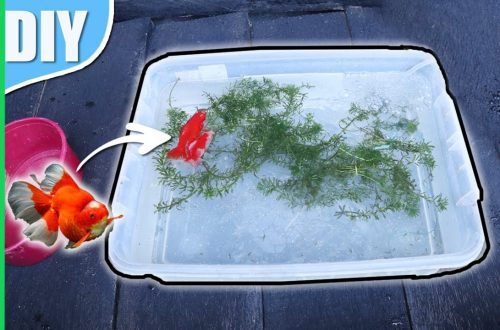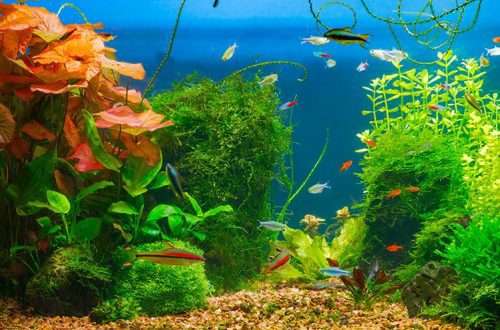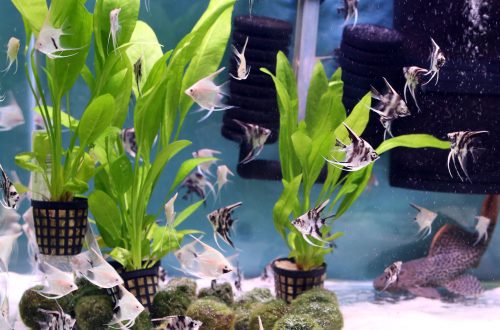
Aquarium fish compatibility
How to correctly populate the aquarium so that its inhabitants get along with each other? This is a question every beginner aquarist should ask himself. Unfortunately, situations when fish die due to the wrong company are not uncommon, and therefore, before buying pets, it is necessary to familiarize yourself with the information about the type and conditions of the selected species as much as possible.
And here are the most important parameters:
- Conditions of detention.
Study the environmental factors for a particular type of fish: water temperature, its chemical composition and movement, lighting, shelter, etc. Only those fish that require the same conditions can be combined in one aquarium.
- Features of nutrition.
It is desirable that your pets have the same diet. Do not combine completely harmless, friendly small fish and dangerous predators in one aquarium. Predatory fish always attack smaller ones. Omnivorous fish also use miniature neighbors as food. However, if all the fish in the aquarium are of similar size and the aquarium is not overcrowded, the unfortunate consequences can be avoided.
Some species of fish are dangerous not only for other inhabitants of the aquarium, but also for humans (electric coal, piranhas)! Be careful!
- The size.
Some fish grow very large (Piaractus pacu, Phractocephalus hemioliopterus redtail catfish) and will definitely need a large aquarium. Miniature fish next to such a giant will experience constant stress, even if he does not hunt them. At the same time, fish that are too small will almost certainly meet with the aggression of larger inhabitants of the aquarium and risk being eaten.
- Territoriality.
Some species need more free space, and when it is scarce, they begin to compete with their neighbors.
- Behavioral features.
Too calm and slow fish will be uncomfortable next to active and brisk ones. And fish that live in flocks in nature will feel bad when kept alone.
- Individual characteristics of the species.
Each species may have its own individual characteristics, which are important to consider. For example, fish have a habit of biting other people’s fins – and this is not dangerous, unless we are talking about a species with especially long fins.
A sign of compatibility can serve as a hint:
Fish of the same species are not always good neighbors. Males often fight among themselves. The same applies to fish of different species, but similar in shape and color: in nature they compete.
Fish that naturally live in flocks experience extreme stress when kept alone. As a rule, in this case, their life expectancy is greatly reduced.
Many bottom fish are much more comfortable living in groups.





